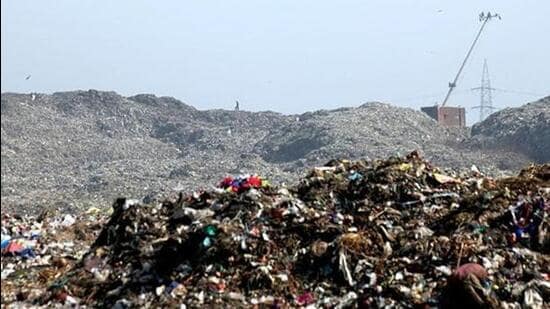Mumbai’s leaky landfills pose ‘severe’ risk of plastic pollution
The peer-reviewed study – ‘Risk of plastics losses to the environment from Indian landfills’ – was published earlier this year in the Elsevier Journal Resources, Conservation & Recycling, and is the first nationwide assessment of landfills in major Indian cities, with respect to plastic pollution.
Mumbai: Out of 496 cities in India, Mumbai presents the most ‘severe risk’ of plastic pollution from landfills, according to a new study led by a researcher at IIT-Kharagpur. This risk is heightened by environmental factors like wind, rain and floods, which make Mumbai’s municipal waste dumps particularly “leaky”, experts said.

All of the city’s landfills (at Deonar, Kanjurmarg and Mulund) are also precariously close to the sea, exacerbating their tendency to pollute, as opposed to waste dumps that are situated inland.
“Plastics from landfills enter the environment through various pathways, namely wind blowing, precipitation and runoff, flooding, and the intervention of stray animals and humans,” states the study.
It added that the relative influence of each of those pathways varies. Flooding might dominate plastics losses in one city while being negligible in another, depending on the quantity of rainfall and flood-resilient infrastructure. Each pathway thus poses a different risk of plastic losses to the environment.
The peer-reviewed study – ‘Risk of plastics losses to the environment from Indian landfills’ – was published earlier this year in the Elsevier Journal Resources, Conservation & Recycling, and is the first nationwide assessment of landfills in major Indian cities, with respect to plastic pollution.
A total of 496 urban centres have been classified across six risk levels – ‘very low’ to ‘low’, ‘moderate’, ‘high’, ‘very high’ and then ‘severe’. Notably, ‘severe’ risk levels included coastal cities like Mumbai, Kolkata and Chennai, with relatively higher precipitation and wind speeds, followed by Delhi, a populous inland city with relatively higher plastic waste generation. Four cities in the ‘very high’ level are from Greater Mumbai urban agglomeration, the data shows.
Vinay Yadav, an assistant professor at the Indian Institute of Technology (Kharagpur) who led this study as a principal investigator, explained its importance.
“Our study builds on the work of a 2018 report of the United Nations Environment Programme (UNEP), which identifies India as a ‘leaky’ region in the global value chain of plastics,” he said. “But we still do not have an empirical sense of how much of this material is being leaked into the environment in India, and from where. We have tried to measure this, and then analyse the measurements based on three parameters: hazard, exposure and vulnerability, to give national and urban policy-makers working on plastic pollution a more granular picture of the ground reality.”
The hazard component refers to natural and or man-made processes such as wind speed, flooding, precipitation, and human or animal influences that cause environmental losses of plastics from landfills.
Exposure refers to the presence of hydrological ecosystems, such as the presence of rivers, wetlands and the sea, which facilitate the transport of plastics from the landfill into the environment. Finally, vulnerability depends on the quantity of waste generated, the degree of indiscriminate use of plastics in the city, and the sanitary conditions of the landfills.
Yadav added that after assessing 496 cities based on these parameters, it’s clear from the data that overpopulated cities located along coastal belts, which see high wind velocities and are severely flood-prone, present a much higher risk of plastic pollution and need priority interventions.
“Mumbai is high up on all these factors. It is overpopulated, uses a large amount of plastic, and is prone to floods and gusty winds. These plastics end up in creeks and on the beach and in creeks, into the systems of marine animals and break down into microplastics that end up in our bodies,” he said.
The study also points out that the onset of the Covid-19 pandemic has significantly increased the generation of plastic waste, such as used personal protective equipment (PPE) kits, disposable utensils, and packaging of food and groceries.
Citing a 2020 paper on the subject, the study states that “India is generating 2.5 million PPEs waste per day, 101 tons per day of plastics in biomedical waste, and 14.5 TPD of plastics waste in testing.”



